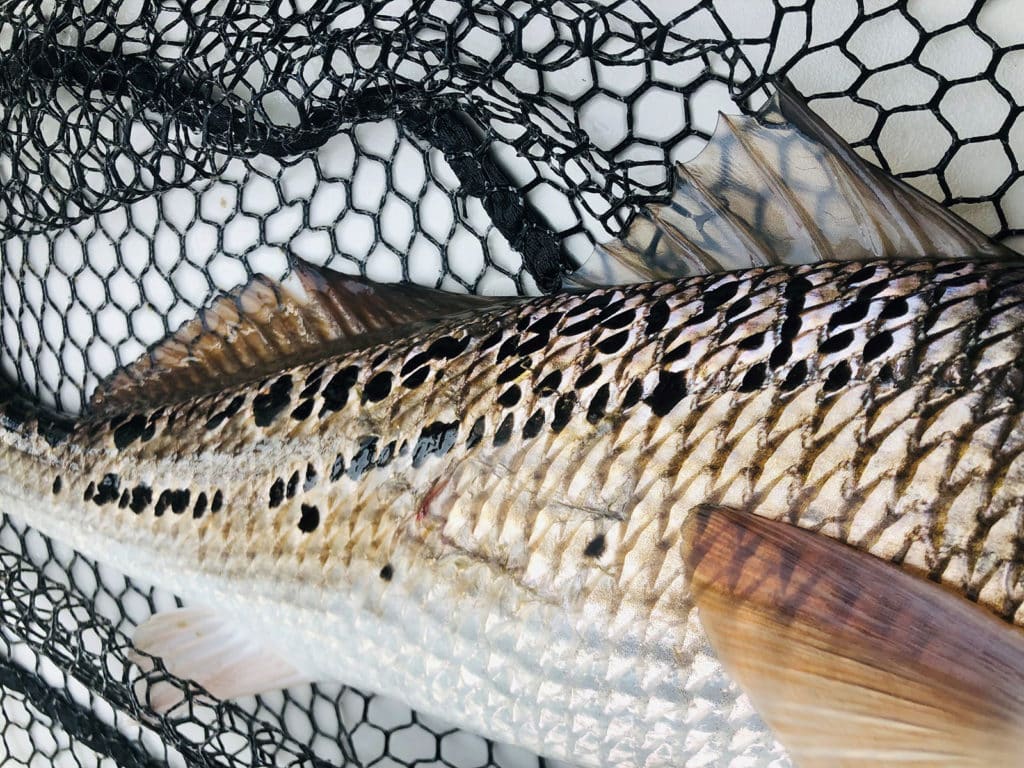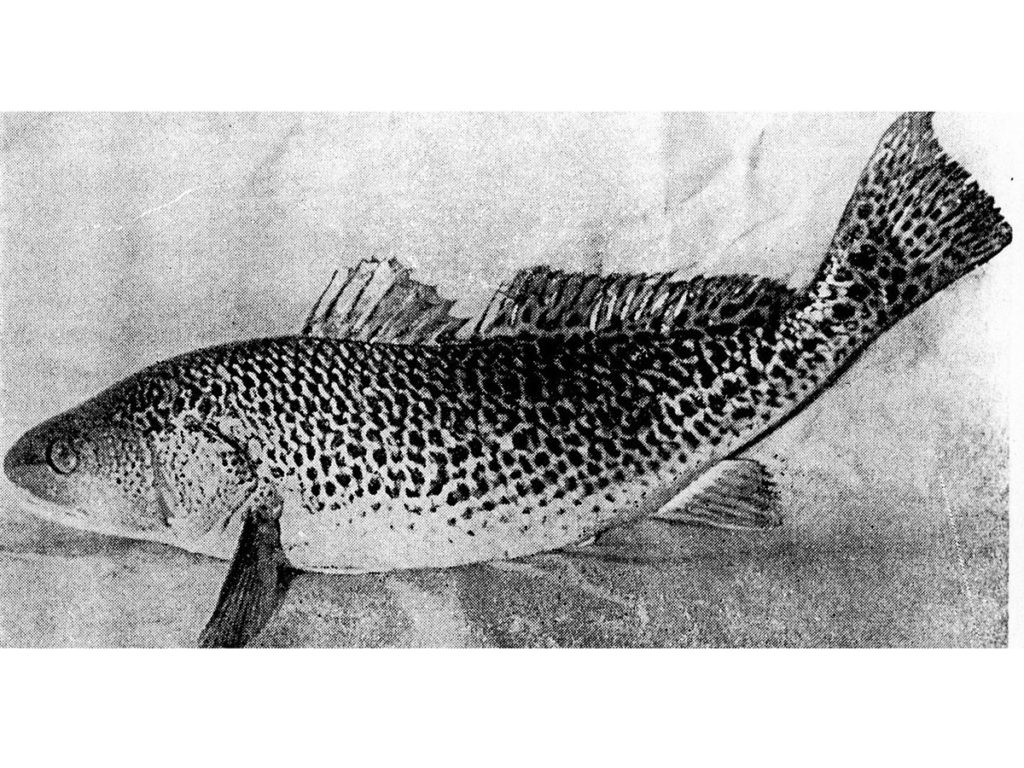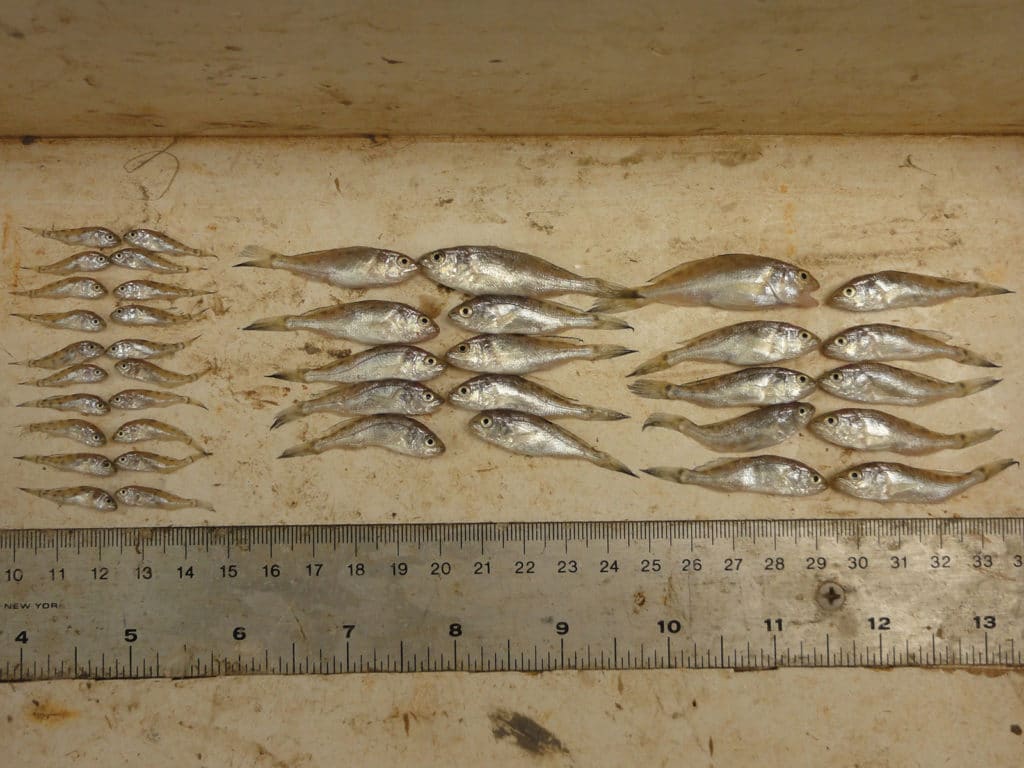
Perhaps the single feature most associated with the red drum is its spot. That is, the one spot (on each side), on its tail. That spot is what’s called ocellated: a black circle, usually surrounded by a white ring, located at the beginning of the tail fin, on the upper side. That iconic mark accounts for the species’ scientific name: Sciaenops ocellatus.
Besides serving the function of helping anglers make a positive identification, scientists figure this spot does serve a purpose, particularly when redfish are smaller. The ocellated spot resembles an eye. Predators typically key on the eyes of prey, both to spot their food and to orient their attack to the anterior part of the prey. So if the spot on a redfish can fool a predator into attacking its tail, the redfish has a better chance of escaping that attack. This strategy, by the way, is not unique to redfish. Mimicry eyespots are found in other fishes, as well as many birds, reptiles and insects. Some are quite intricate and realistic enough to make a person look twice to understand just what they’re seeing.
The Spot Tail of a Redfish
Is it fair to say that most reds have the single spot per side? More than fair, according to Joel Anderson, geneticist and facility manager at the Perry R. Bass Marine Fisheries Research Station and Hatchery in Palacios, Texas. Anderson has seen scores of reds over the years and says, “I would say that 75 percent or more of redfish have that single spot.”
However, it’s not impossible for redfish to have another spot or two on the tail or side of the body, usually toward the back. Most anglers take note of such a catch, often enjoying the uncommon pattern. Anything more than a few spots is more unusual, but what of redfish which are essentially covered in spots? What is the significance of that?

One theory sometimes heard suggests these “leopard redfish” are redfish-trout hybrids. In fact, such cross-genera hybridization in fish is almost unheard of. The odds of a redfish/trout hybrid are virtually nil. So even redfish completely covered in spots are simply redfish. Some anglers theorize a link with the number of spots to size of the fish, the color/clarity of water it lives in, or being hatchery raised.
In fact, Anderson says the basis for many spots on a redfish is probably determined before it’s born. “Multiple spotting is probably caused by a short-circuiting of the genetic architecture that underlies the spot character,” he explains. “This might be caused by simple genetic variation; in other words, it could be analogous to human eye color or hair color. Alternatively, the variation might be caused by a disruption of cellular chemistry early on in the fish’s life; so single-spot and multi-spot redfish could be genetically identical for the genes that control spotting, but multi-spotted individuals might experience acute stressors early on in life that cause an alternative expression of those genes.”

Multiple Spots on a Redfish
Turns out that when they’re very small, reds typically sport an abundance of body spotting, but as they get to be two or three inches, those spots fade and the prominent tail spot starts to form.
Could there be any advantage to having multiple spots versus the single caudal eyespot? Perhaps, says Anderson. “Multiple spots might be advantageous in turbid water.” He suggests multiple spots might give the fish more camouflage in turbid, darker water.
Can a redfish, unlike a leopard, change its spots? Indeed, as they grow, reds’ spots may fade or change in size or shape as pigmentation is absorbed.
So how many spots is many? At least one of the more impressive examples is a seven-pound red taken near Flamingo, Florida, in 1997. The spot count, confirmed by marine biologists, totaled more than 500. In recent years, Capt. Eddie Berthelot, Jr. caught a redfish in Louisiana on which he counted 670 spots. And just this year, a Texas angler caught a red drum that definitely qualifies as a “leopard” redfish — they counted 311 spots on one side of the fish before giving up on counting the other side.
Then again, there’s the flip side: the no-spot redfish. These might be as unusual as “leopard redfish.”









